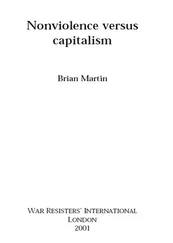Beginning in 1975, the Indonesian government enforced an effective blockade against East Timor in order to combat guerrilla and popular resistance. Since East Timor is half of a remote island, the other half of which is Indonesian territory, enforcing the blockade was not difficult, given that no other government did much to challenge the Indonesian occupation in spite of repeated United Nations resolutions. [6] . The contrast between UN inaction over Indonesia’s invasion and occupation and UN-sponsored action over Iraq’s invasion and occupation is striking.
Direct killings and starvation due to the blockade led to the deaths of perhaps one third of the East Timorese population. In this case, the blockade has been a potent tool against a largely rural society.
In 1988, people of the island of Bougainville in the southwest Pacific declared their independence from Papua New Guinea. The PNG government mounted a military operation against the Bougainville Revolutionary Army, supplementing this with a blockade. The blockade was intended to be total, preventing even medicines from being brought in. As might be expected, this has led to considerable suffering on the island.
In the cases of Iraq, East Timor and Bougainville, blockades were used to help subjugate an armed resistance and, in each case, caused hardship and death in the population. The existence of an armed resistance helped to provide a public justification for these blockades, however inhumane and illegal they may be. If the resistance is totally nonviolent, it becomes more difficult to justify a blockade. Perhaps the best example of such tactics used against an unarmed resistance is the Israeli occupation of Palestine, mentioned in chapter 3. During the intifada, from 1987 to 1993, the Palestinian resistance to the Israelis was largely nonviolent, though it is more appropriate to call it unarmed since it was mostly a lack of arms rather than a principled position that restricted the use of violence. (The throwing of stones was a commonly used tactic.) The Israeli occupiers used a variety of harsh methods to quell the resistance, including beatings, destroying houses and shops, enforcing curfews (often for days at a time), closing down schools and universities, and preventing travel. The net effect of these measures made survival problematic for many Palestinians, for example when economic sanctions reduced family finances to minimal levels and curfews prevented movement out of houses for all but a few hours per day. The Palestinian case is different from that of Iraq, East Timor and Bougainville both in the lack of a resistance armed with more than slingshots and stones and in the enormous international sympathy and support generated by the struggle.
Although a population waging a nonviolent resistance — at least one with a capacity to communicate to the rest of the world — is unlikely to be starved to death or otherwise find its very survival at stake, it is prudent to be prepared for the worst. This is a task for engineers.
Historically, the engineering profession began with military applications. When a branch of engineering developed that was concerned with nonmilitary applications, it was called civil engineering to emphasise the civilian orientation. Today, there are many branches of engineering, from mechanical to computer engineering, all of which can be used for military or nonmilitary purposes. As described in chapter 2, even ostensibly nonmilitary engineering can often be adapted for military purposes. There are very few engineers who have even considered what it would mean to direct their specific engineering talents to promoting peace. [7] . One who has done so is David Paterson, “Peace and engineering,” in Sandra Sewell, Anthony Kelly and Leonie Daws (eds.), Professions in the Nuclear Age (Brisbane: Boolarong Publications, 1988), pp. 201-212.
Presented here are a few preliminary ideas about redesigning technological systems to make them more suitable for nonviolent struggle. [8] . Many of these ideas come from engineers at the University of Wollongong interviewed by Mary Cawte and me.
It would only take a few dedicated engineers or other experts to test and develop these ideas.
The water supply, especially one based on large dams, is highly vulnerable to disruption. Dams could be designed so that, in an emergency, the water could be released quickly but safely. In a number of countries that are still developing their infrastructure, choosing microhydro rather than large dams would greatly aid resilience against attack. Another approach is using water tanks and dry toilets to reduce water requirements from a central supply system which might be destroyed by an aggressor.
Similarly, producing steel at numerous minimills, geographically dispersed, provides greater resilience than having a few large integrated steelworks. Installing solar and wind power systems throughout the country would mean that the population could not be held hostage by control over electricity generating plants. The challenge is to develop technologies that are efficient and require little maintenance. Of course, economic incentives are important in promoting such alternatives.
Bridges are often attacked by aggressors. Building a bridge that would survive any attack would be impossibly expensive, though designs allowing easy rebuilding would be possible. Also, bridges might be designed so that saboteurs could easily be detected. Laser detectors, perhaps?
Similar considerations apply to housing. In order to be able to reconstruct destroyed buildings, designs should be simple and straightforward, relying on readily available materials. Portable homes might be useful for moving people around the country. There is some research on cheap, effective housing for the Third World which may be applicable. Research could be done on materials to make tents long-lasting. Combined with telecommunications, tent-based activists would be hard to track down.
In the case of manufacturing, aggressors often take over plants for their own purposes. To resist, workers could go on strike, but torture against workers or their families could be used to break the strike. Another approach is to go slow and make “inadvertent” mistakes, as done in some factories taken over by the Nazis in World War II. A technological solution — raised by Johan Galtung, quoted in chapter 4 — is to design the factory so that vital pieces of equipment can be removed or destroyed. Replacements could be kept in a safe place, such as another country. Torture would be pointless, since it couldn’t get the factory going again. Actually, in many modern factories, the technological sophistication is so great that outsiders would not know whether the workers were resisting or not.
When hierarchies are flattened and groups of workers can operate without a boss, the workforce is better equipped to resist a takeover. Therefore, manufacturing systems that are tied to empowering the workers may be the best for nonviolent struggle.
Large-scale monocultures are vulnerable to disruption. A more resilient food system would include many local gardens and food-bearing trees. Relevant research here includes seed varieties robust to lack of fertilisers and pesticides, nutritious diets from wild natives, and methods for long-term storage of food. [9] . Methods used by farmers to survive the impact of warfare are relevant here. For example, in Angola farmers intensively cultivated tiny plots, grew the very hardy grains millet and sorghum, took up hunting and fishing, saved seeds to sow the next year’s crop and adopted mutual aid systems for planting, weeding and harvesting. Although some of these practices, such as choosing hardy grains and saving seed, reduced yields, they were more resilient in times of intense threat and stress. See David Sogge, Sustainable Peace: Angola’s Recovery (Harare, Zimbabwe: Southern African Research and Documentation Centre, 1992), pp. 39-41. I thank Rebecca Spence for providing this reference.
Читать дальше












